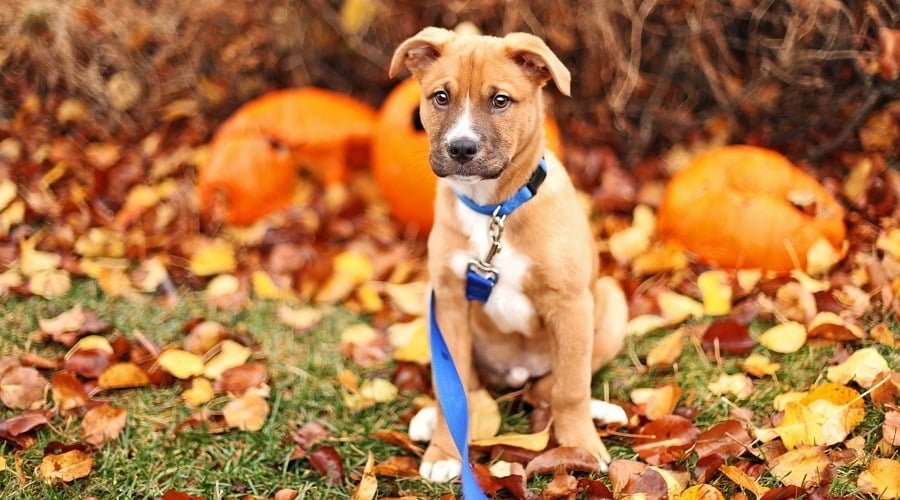Lab Rottweiler Mix: Meet The Dog That’ll Guard Your House & Steal Your Sandwich
When you purchase through links on our site, we may earn a commission. Here’s how it works.
Meet the Rottweiler–Lab mix, a dog that’s equal parts protector, prankster, and professional cuddle thief. Muscles of a Rottie, mischief of a Lab. They’ll guard your house… but might trip over their own paws in the process.
Table of Contents
Here’s what makes this unpredictable mix (affectionately called a Labrottie or Rottador) both the sweetest companion — and the biggest handful — you’ll ever love.

The Personality Plot Twist: Sweetheart Or Security System?
One minute they’re snuggling on your lap, the next they’re growling at a leaf outside. That’s life with a Labrottie, a perfect storm of loyalty, love, and low-level chaos.

They inherit the Rottweiler’s deep devotion and emotional intelligence — the kind of dog that checks on you when you sigh — blended with the Labrador’s endless optimism. It’s why they connect so easily with their people. They don’t just want to protect you; they want to belong to you.
Some Labrotties lean serious, always alert and reading the room. Others are pure Labrador energy, greeting every stranger like a long-lost friend.
Most land perfectly in the middle — steady, goofy, loyal, and just dramatic enough to keep life interesting.
Why They’re So Lovable
- Gentle with family and kids
- Intuitive about your mood
- Loyal without being clingy
- Big heart, soft center
- Always ready for affection, never too proud for belly rubs
Training Tip
A Labrottie’s best behavior comes out when they feel included in daily life. Keep them near you, talk to them often, and make them part of the routine. They’re happiest when they belong.
Built Like A Bodyguard, Acts Like A Baby
At first glance, the Labrottie looks steady and strong. Broad shoulders, balanced frame, and that calm Rottweiler gaze make them seem like they take life seriously. Then they nudge your hand for pets, flop on your feet, and remind you they’re really just a family dog in a big body.

Most stand 22 to 28 inches tall at the shoulder and weigh between 70 and 100 pounds, depending on which parent they take after. Males tend to be larger and more solid; females are a little lighter on their feet but just as affectionate.
Their build is athletic rather than bulky — a smooth blend of Labrador strength and Rottweiler steadiness.
Despite the size, they’re gentle. They love to lean, sit halfway on your lap, or curl up next to you, even when there’s no room.
Quick Takeaway: The Labrottie’s size might turn heads, but their heart wins people over. They’re built for strength, yet made for comfort.
Coat & Colors
A Labrottie’s coat tells you a lot about which parent they take after. Some have the short, dense fur of a Rottweiler, while others carry the slightly softer, more water-resistant coat of a Labrador. Most land right in the middle — smooth to the touch, with just enough thickness to handle cold weather or a surprise swim.
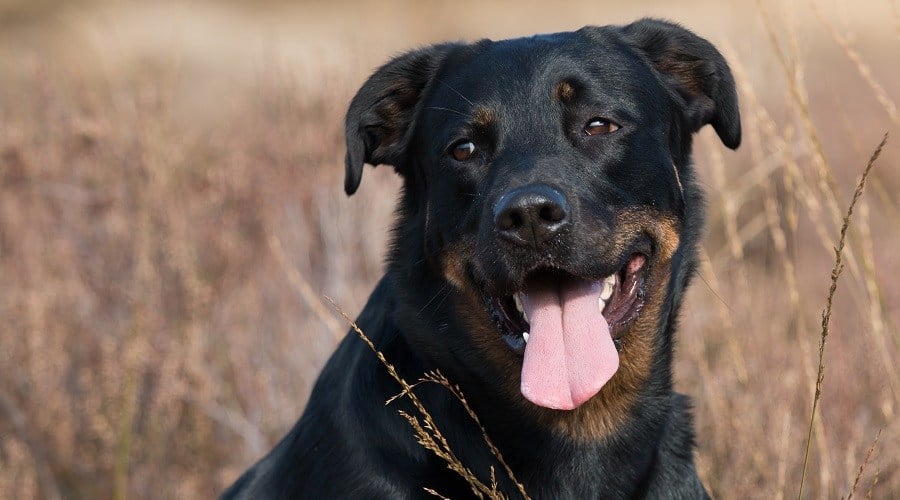
Their coats are low-maintenance but expressive: you’ll see deep black, chocolate brown, black-and-tan, and the occasional silvery gray. Black-and-tan is the most common, often paired with that signature Rottie face mask.
Because both parents have double coats, light shedding happens year-round with heavier bursts in spring and summer. Weekly brushing keeps the shine and helps reduce the tumbleweeds of fur that appear out of nowhere.
Care Snapshot
| Coat Type | Texture | Shedding | Weather Fit |
|---|---|---|---|
| Short (Rottie-leaning) | Dense and glossy | Low-moderate | Cold-tolerant |
| Medium (Lab-leaning) | Slight wave, water-resistant | Moderate | All seasons |
Quick Takeaway: Short, sleek, and built for any weather, a Labrottie’s coat is part Labrador durability, part Rottie style.
Grooming Your Labrottie
A Labrottie might look like a lot of dog to maintain, but their grooming routine is surprisingly easy. A quick brush a few times a week keeps their coat healthy and helps catch loose fur before it settles on your floor — or your clothes.

They usually enjoy the attention once they realize brushing feels good. It’s also the perfect way to check for bumps, ticks, or dry patches, especially during shedding seasons. Most owners find that grooming time turns into quiet, one-on-one bonding — the kind of calm moment that balances out the zoomies.
Bathing is simple, too. Unless they roll in something questionable, once every month or two is plenty.
Too many baths can strip the coat’s natural oils. Focus on gentle brushing, ear checks, and nail trims every few weeks instead.
Quick Takeaway: Five minutes of brushing does more than keep your Labrottie clean — it keeps them connected to you
At-Home Care Checklist
- Brush two to three times per week
- Bathe every 4–8 weeks (as needed)
- Trim nails monthly
- Wipe ears after swimming
- Check paws after walks for debris
Owner Tip
Brush outdoors if you can. It saves cleanup time, and most Labrotties love the fresh air. For heavy shedders, use a rubber curry brush or de-shedding glove — it mimics petting, and they’ll think it’s a spa day.
Zoomies At Full Speed: Living With That Energy
A Labrottie’s energy has two modes: nap or go. When they decide it’s time to move, you’ll know. Toys fly, tails spin, and anything in their path becomes part of the obstacle course.
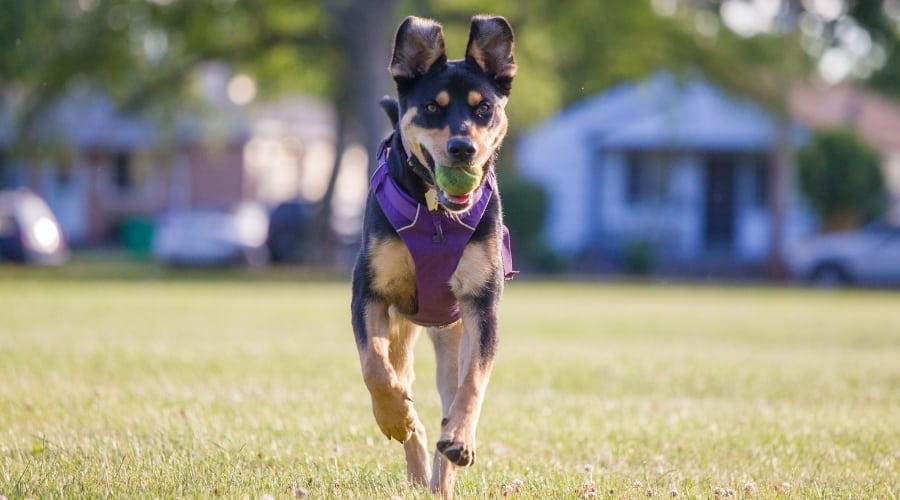
Both Labradors and Rottweilers were bred to work, so their mix thrives on purpose. Long walks, fetch, swimming, and tug-of-war are their favorite ways to spend time with you. They do not just need exercise; they need connection while they burn energy.
A healthy adult Labrottie should get about an hour of exercise each day, split into morning and evening sessions. Younger dogs may need more, but the payoff is huge: a calmer, happier companion indoors.
Even on rainy days, they will remind you it is playtime, usually by dropping a toy in your lap or staring at the leash like they can will it to move.
How To Channel That Energy
- Morning walks: 30 minutes of brisk pace or off-leash play
- Evening games: Fetch, tug, or puzzle toys
- Weekend reset: Swimming, hiking, or long park visits
- Mental workouts: Hide-and-seek with treats, short training bursts
Owner Tip
Skip the hottest part of the day. Their dense coat holds warmth, so early morning and evening walks are safest. Always bring water; they will go longer than you expect.
Smart, Stubborn & Super Trainable (When Snacks Are Involved)
Training a Labrottie is equal parts brainpower and comedy show. They are smart enough to learn fast, but clever enough to test whether you really mean what you say. Once you find their motivation, though, they are eager to please.
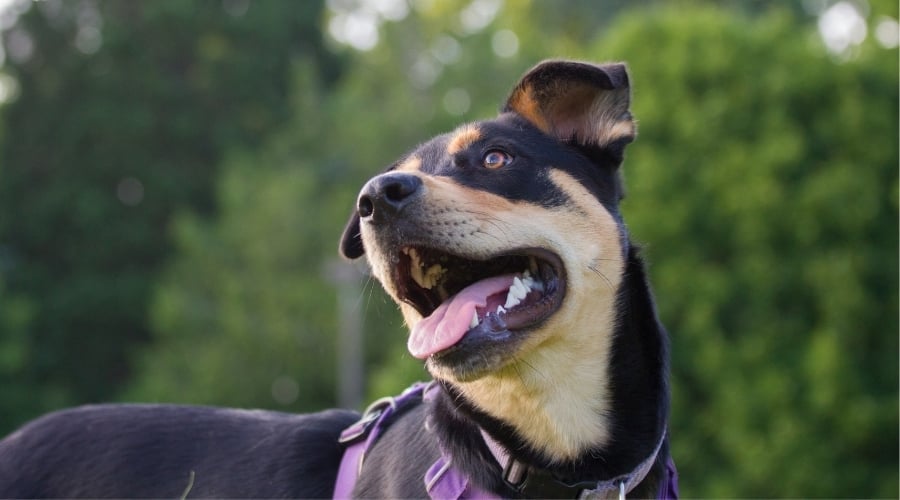
Their Rottweiler side responds to structure and consistency, while their Labrador side works best with fun and enthusiasm. The result is a dog that learns quickly when you keep things positive. Praise and food go a long way, especially in short, upbeat sessions.
Start with basics like sit, stay, and come, and keep lessons around ten to fifteen minutes. Repeat commands calmly and reward success every time. They will get bored with too much repetition, so end on a win and move on.
Training Tips That Actually Work
- Use food rewards early, then fade to praise as they mature
- Keep sessions short and end on success
- Socialize them early with new people and dogs
- Mix physical play with mental puzzles
- Practice patience; they are sensitive to frustration
Trainer’s Note
Early socialization is as important as obedience. A confident Labrottie is one who learns that strangers, new sounds, and other animals are part of everyday life. Calm exposure builds trust and prevents overprotective behavior later.
Health & Appetite: Built Like a Tank, Eats Like One Too
Rottweiler Lab mixes are generally healthy dogs, but their size and food-seeking nature can make them prone to a few preventable issues. Regular exercise and a well-balanced diet go a long way toward keeping them strong and active for years.

Most live for about 10 to 12 years. The biggest health concerns for this mix are hip and elbow dysplasia, obesity, and bloat. Their sturdy frames can put pressure on joints, especially if they gain extra weight. Keep them lean and moving, and schedule regular vet checkups to catch early signs of stiffness or limping.
Their appetites are legendary. Labradors are known for loving food, and that trait often dominates in the Labrottie. Left unsupervised, they will happily overeat or steal snacks when you are not looking. Feeding smaller, measured meals twice a day helps prevent overeating and reduces the risk of bloat.
Common Health Watch List
- Hip and elbow dysplasia
- Obesity and diabetes
- Bloat or overeating
- Skin irritation from allergies
Feeding Basics
| Age | Meals Per Day | Food Type | Notes |
|---|---|---|---|
| Puppy | 3+ small meals | Large-breed puppy formula | High protein for growth |
| Adult | 2 balanced meals | Large-breed adult food | Support joint health |
| Senior | 2 smaller meals | Senior blend | Adjust calories and add joint supplements |
Owner Tip
Avoid feeding from the table. Human food can add calories quickly and cause stomach upset. Use training treats sparingly, and balance them with plenty of active play.
Life With a Labrottie: Can You Keep Up?
Living with a Rottweiler Lab mix means embracing energy, loyalty, and a bit of chaos all at once. They bring the devotion of a Rottweiler and the humor of a Labrador, and they expect to be part of everything you do.
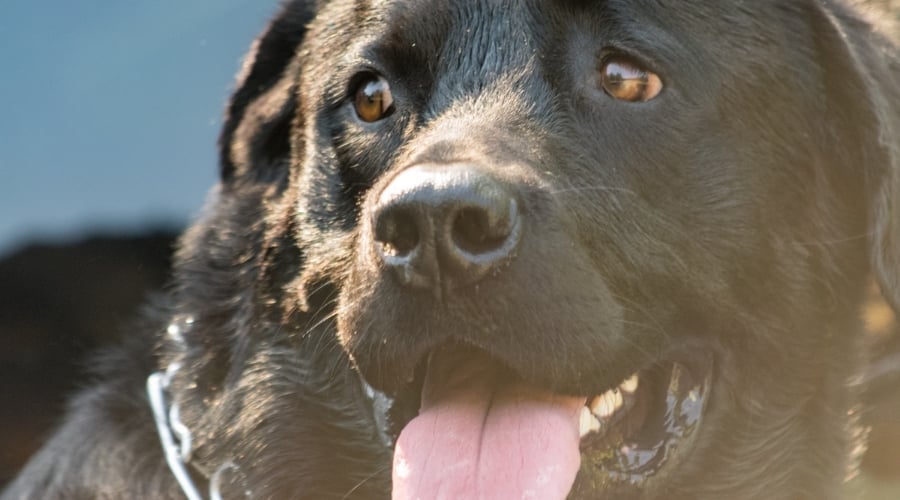
They will follow you from room to room, sit too close on the couch, and somehow know exactly when it is time for a walk. A Labrottie’s love is big and constant, and that makes them happiest when they are included in daily life. Leave them out too often, and they may invent their own entertainment, which usually involves something you did not plan to clean.
Families love their mix of confidence and playfulness. They are great with kids, protective without being overbearing, and gentle once they understand who belongs in their circle. They are not the right match for people who want a calm, low-maintenance companion, but they fit right in for active households.
Signs You Are A Perfect Match
- You have time for long walks and daily play
- You like big, affectionate dogs who stay close
- You do not mind a little fur on everything you own
- You want a protector who also makes you laugh
Owner Tip
A Labrottie thrives when they feel useful. Give them small jobs like carrying a toy on walks or learning new tricks. They love responsibility as much as reward.
Where To Find One: Breeders, Shelters & Second Chances
Labrotties are not rare, but finding the right one takes a bit of research and patience. Because this mix is popular with families, you can often find them through both breeders and rescues. The key is choosing a healthy, well-socialized puppy or an adult dog whose temperament fits your lifestyle.

Reputable breeders usually charge between $800 and $1,200, depending on location and lineage. Look for breeders who can provide health clearances for both parent dogs, especially for hip and elbow scores.
Visit in person when possible to see how the dogs are raised and to meet the parents. A good breeder focuses on temperament just as much as looks.
If you would rather adopt, check local shelters and breed-specific rescues. Many Labrotties end up in adoption centers when owners underestimate their size or energy level. Both Labrador and Rottweiler rescue groups often list mixes under either name, so expand your search terms.
Adopting a dog can be incredibly rewarding. Many adult Rottweiler-Lab mixes already know basic commands and are eager to connect. With structure and love, they adjust quickly to new homes.
Adoption Snapshot
| Option | Cost | Pros | Considerations |
|---|---|---|---|
| Breeder | $800–$1,200 | Health-tested parents, predictable upbringing | Waitlists, higher price |
| Shelter or Rescue | $100–$400 | Lower cost, gives a dog a second chance | Background may be unknown |
Owner Tip
Ask about early socialization and personality before you bring your Labrottie home. A confident, friendly puppy or a calm, well-adjusted rescue is a sign of good upbringing and makes for an easier transition.
Frequently Asked Questions
If you are thinking about bringing a Rottweiler–Labrador mix into your life, it helps to know what to expect. Below are answers to the questions owners ask most often about this lovable, high-energy breed. From exercise needs to temperament, here is what life with a Labrottie really looks like.
Don’t see your question? Ask us in the comments!
Are Labrotties Good Family Dogs?
Yes, Labrotties are excellent family companions when properly trained and socialized.
They are affectionate, loyal, and tend to form deep bonds with every member of the household. Their Labrador side makes them playful and patient with children, while their Rottweiler side adds a calm, protective presence.
Because they are large and sometimes unaware of their own strength, supervision around small kids is essential. With early socialization, most Rottwiler Lab mixes get along well with other pets, too.
They thrive in families that include them in daily routines and provide both love and structure.
Do Labrotties Bark A Lot?
Labrotties are alert dogs, so they will let you know when something unusual is happening. However, they are not chronic barkers by nature.
Most bark to announce a visitor, a delivery, or a strange noise, then settle quickly once they know everything is fine.
If a Labrottie barks excessively, it is often because they are bored or under-exercised. Consistent routines, plenty of exercise, and early training help teach them when it is time to be vocal and when to stay quiet.
With patience and attention, you can easily shape them into polite communicators.
How Much Exercise Do They Need?
Labrotties are active, working-breed dogs that need about an hour of structured exercise every day. This can include brisk walks, fetch sessions, swimming, or hiking.
Mental exercise is equally important. Training games, scent work, and puzzle toys help challenge their sharp minds and reduce boredom.
Are Labrotties Easy To Train?
They are intelligent and highly capable, but their independent streak can make training a mix of fun and patience. Their Rottweiler genes respond best to consistency and clear leadership, while their Labrador side loves enthusiasm and praise. Once they understand what you want, they will work hard to please you.
The key is keeping sessions short, positive, and engaging. Use treats, toys, and encouragement to hold their attention. They may test limits occasionally, but with calm persistence and early socialization, Labrotties become wonderfully obedient and reliable companions.
Can Labrotties Live In Apartments?
A Labrottie can live happily in an apartment, but it takes commitment. They are large dogs with a lot of energy, so they need daily walks, regular outings, and mental stimulation to stay balanced. An under-stimulated Labrottie in a small space can become restless or vocal.
If you have a busy schedule, hire a dog walker or set aside time for active play in the mornings and evenings. As long as they get their exercise and attention, Labrotties are adaptable and will rest calmly indoors. The key is keeping them close to their people and involved in daily life.
How Long Do Labrotties Live?
Most Labrotties live between ten and twelve years, though some reach thirteen or more with excellent care.
The best way to extend their lifespan is through routine vet checkups, quality food, and consistent activity. Keeping their joints strong, their minds sharp, and their weight under control adds years of comfort and energy to their life.
The Labrottie’s Roots: Rottweiler vs Labrador
A Labrottie will test your patience, steal your spot on the couch, and make every ordinary day louder and funnier. They protect what they love and love what they protect.
It’s not always easy living with a dog this big and this full of personality, but it’s never boring. They remind you that loyalty isn’t quiet — it’s joyful, messy, and full of heart.
If you’re curious how their parent breeds compare, check out our deep dive on the Labrador Retriever vs. Rottweiler. It’s the perfect follow-up if you’re still deciding which side of the family suits you best.



